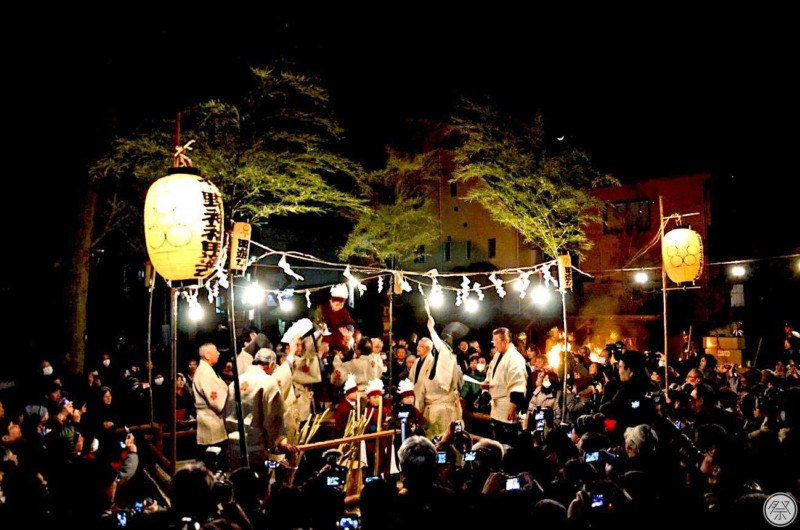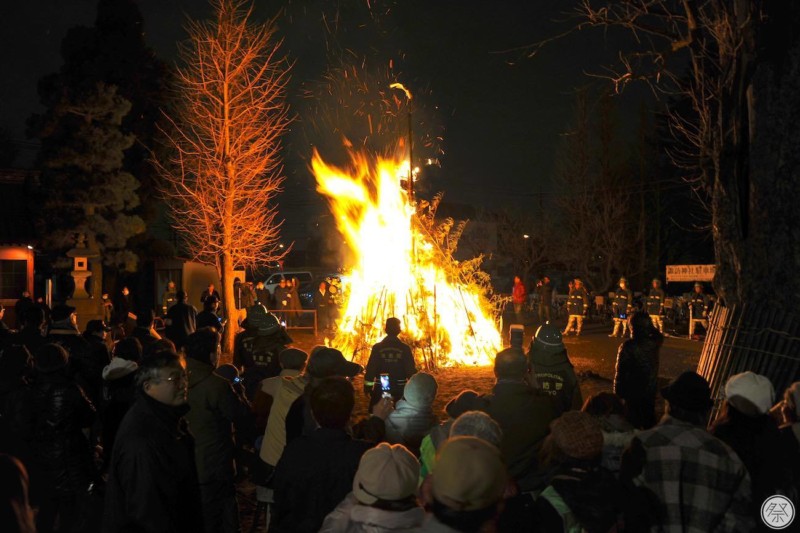The Ta-asobi (rice field play), fascinatingly, is a "celebration in advance." Locals celebrate both the year's rich harvest as well as the prosperity for all descendents prior to even the beginning of the rice-planting season as a way to pray for the actualization of those wishes. Itabashi's Ta-asobi festival consists of "Tokumaru Kitano Shrine's Ta-asobi" and "Akatsuka Suwa Shrine's Ta-asobi" both held at each of those shrines. The entire season of rice farming is enacted in a play-like simulation, in wishing for the year's harvest to be just as plentiful as imagined.
Humorous characters also appear amidst the festival, expressing wishes of descendants' prosperities as well as safety in birth. It shows us a glimpse of how important good harvest and the gift of children were to the ancestors of the region.
This celebration has continued in this local area—which used to be a major producer of rice—for over a millennium without skipping even a single year. Here, you will find the Japanese passion and spirit for rice-farming.


"Ta-asobi" performed as a ritualistic simulation of the year's rice farming prays for good harvest and the descendents' prosperity through acts and performances depicting motions of rice-planting, harvest, etc. A boy is carried in the above picture—this shows a motion representing rice-planting. The act expresses the healthy growth of rice and the child. Watch the ceremony while guessing what meanings each movements must hold. The reason to why the festival is held at night, is because it used to be a secret ceremony held all night long. Please experience the essence of the Japanese farming culture passes on from ancient days.

After the Ta-asobi performance, an "Okagari" ceremony is held at the Akatsuka Suwa Shrine where New Year ornaments are piled up and then set on fire. Come watch the flame that purifies the misfortunes of the past year and prays for a happy and renewed year.
http://tokumarutenjin-kitanojinja.jimdo.com/
Tokumaru Kitano Shrine
Please respect and preserve the mood and atmosphere of the festival as you watch. (The festival is a sacred ritual held in a divine atmosphere)
Please wear warm clothes since it is held during the coldest time of the year.
Please prohibit from driving your cars to the festival
Access to Itabashi
[nearest station]
Tokumaru Kitano Shrine:
Tobu-Nerima Station or Narimasu Station (Tobu Tojo Line)
Akatsuka Suwa Shrine:
Shin-Takashimadaira Station (Toei Mita Line) or Narimasu Station (Tobu Tojo Line)
Festival venue
Tokumaru Kitano Shrine
Address: 6-34-3 Tokumaru, Itabashi-ku, Tokyo
・Catch the Kokusai Kogyo Bus (Tokumaru loop line) from outside Tobu-Nerima Station, get off at Kitano Jinja-mae bus stop. (approximately a 10 min bus ride)
・Catch the Kokusai Kogyo Bus from outside Narimasu Station bound for Akabane, get off at Kobai Shogakko-mae (Kobai Elementary School) bus stop and walk for 5 min. (approximately a 10 min bus ride)
Akatsuka Suwa Shrine
Address: 11-1 Daimon, Itabashi-ku, Tokyo
・15 min walk from Shin-Takashimadaira Station
・Catch the Kokusai Kogyo Bus from outside Narimasu Station bound for Takashimadaira Soshajo, get off at Daimon Takenoko Koen bus stop and walk for 3 min. (approximately a 10 min bus ride)